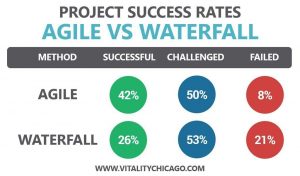First-price Auctions Aren’t the Best Solution For Publishers Or Brands, Especially When It Comes To Video
Second-price auctions have been the unquestioned auction model in online advertising since the rise of Google paid search. However, they have rapidly been giving way to first-price auctions in many programmatic ad exchanges, largely due to the fragmentation of demand and complexity of multiple auctions occurring prior to the final ad server decision.
Unfortunately, putting first-price auctions into practice has only exacerbated the already existing problems of today’s complex programmatic supply chain, for both publishers and brands alike. Rather than heading further down the road of more first-price auctions, a new approach to ad serving should be considered which both maintains true second-price auction mechanics and provides true consolidation of demand.
Why Do We Need a New Alternative?
Regrettably for publishers, first-price auctions aren’t likely to actually increase CPMs and will, in reality, only inhibit a publisher’s ability to gain knowledge of the true value of their inventory. Smart bidders will actually bid lower than they would in a second-price auction (often at continuously lower levels) in order to find the bare minimum price needed to win impressions, resulting in lower CPMs and obfuscating pricing knowledge. This is especially deleterious in supply-constrained markets like premium online video, where competitive pressure between buyers is the best way to drive higher prices.
First-price auctions also don’t solve for brands’ concerns around programmatic complexity — and, they may exacerbate this issue, with multiple vendors and auctions (exchange, header bidding wrapper, and ad server) each taking a slice of the ad dollar. Alternatively, the less complex solution to opaque, multi-layered second-price auctions is not first-price auctions, but instead true, transparent second-price auctions across both direct and programmatic sales channels, resulting in a unified decision and a level playing field for brands and publishers alike.
So What Does This Better Path Forward Look Like?
Despite their current popularity, first-price auctions shouldn’t be the default answer to solving for better marketplace transparency and inventory valuations. Instead, we should be turning attention to the following:
- Fully transparent auction mechanics, grounded in second-price principles that advertisers and publishers understand. First-price auctions distort pricing for both buyers and sellers, but so do other forms of second-price market manipulation like artificial floors. Un-manipulated second-price auctions remain the best way for advertisers to win the impressions they want the most and for publishers to understand the full value of their inventory.
- An alternative to header bidding which provides true unified ad decisioning. Header bidding has been a good first step in helping publishers better manage direct sold and programmatic demand, particularly in display, but the debate over auction mechanics only highlights the flaws of the header bidding model — a complex, multi-stage auction with limited control for both publishers and advertisers.Moving ad decisioning back into the publisher’s ad server where all programmatic demand can compete against direct sold demand, and a single second-price is determined against prices of directly sold campaigns, is the only sustainable path to delivering optimal yield and transparency for publishers, while also giving advertisers the best chance to win the impressions they value most.
- A simpler supply chain, with no conflicts of interest and more direct advertiser to publisher relationships. While programmatic transactions will always require technology intermediaries, the programmatic ecosystem needs fewer technologies between publishers and advertisers, not more. Restoring trust in programmatic requires more than just a reduction in numbers; technologies need to focus on representing the interest of advertisers or publishers exclusively.
First-price auctions may be increasingly common, but they aren’t the panacea some publishers or brands perceive them to be. As publishers and brands seek an alternative to historical programmatic norms, it’s time that they give fully transparent second-price auctions a real chance.
MediaPost.com: Search Marketing Daily
(40)





